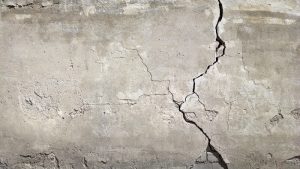There are many factors that will cause concrete deterioration. Although it is an incredibly durable and reliable material, it won’t last forever, not without the proper initial installation and maintenance. Follow these concrete tips to ensure the integrity and strength of your structures.
- Concrete Reinforcement
Steel reinforcement is often used in concrete applications to make the resulting structure that much more sound, strong, and secure. But, steel can be susceptible to corrosion, especially in the winter and cold climates. Once corrosion starts to spread, it’s almost impossible to stop and therefore, repairing an isolated area likely won’t solve the problem. Prevent steel reinforcement corrosion by ensuring that you have at least 1.5 to 2 inches of concrete over the reinforcements. An impermeable concrete mix that consists of a low water-to-cement ratio is best for protecting the steel. In addition, other corrosion-inhibiting materials like an epoxy coating and penetrating sealers help ensure that the steel will remain effective.
- Sulfate Tests
Exposure to water that contains a high number of dissolved sulfates leaves your concrete vulnerable to cracks. A sulfate attack comes from sulfate-containing water entering the concrete, crystallizing, and expanding. The other option is that the sulfate salts will cause the cement paste to dissolve, soften, and ultimately erode. Prevent this type of deterioration by testing the sulfate content of the water and soil, and then creating a resistant concrete mix by limiting the water to cement ratio.
- Cement-Aggregate
In certain conditions, a reaction of alkali-silica will create an expansive gel that will cause concrete to crack. You’ll notice this reaction by the presence of “map cracking” and white or gray gel-like deposits. Minimize this reaction by testing the combination of cement-aggregate for the cement alkalinity limit, expansion, and petrographic, or rock and mineral, characteristics. Consider adding slag or low-alkali fly ash to the cement and reduce the amount of alkali in the concrete.
Concrete Care and Maintenance from Concrete Visions
Concrete Visions has over 12 years of experience and expertise in concrete scanning and we know how to detect any problems lurking beneath the surface. We use ground penetrating radar accurately and expertly and are familiar in many other methods that can be used when appropriate like concrete x-ray and electromagnetic conductivity. We are also very familiar with the latest construction safety techniques and train all of our workers to do their work quickly, accurately, and safely. If you would like to learn more about how we can help you, give is a call at (410) 766-2210 or visit us online. For more articles and tips, follow us on Facebook, Twitter, LinkedIn, and Google+.

